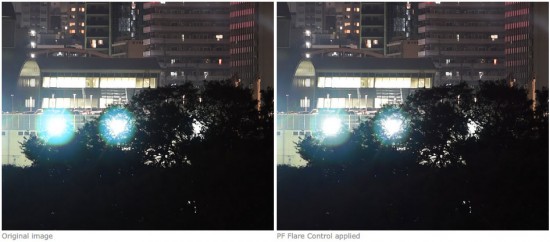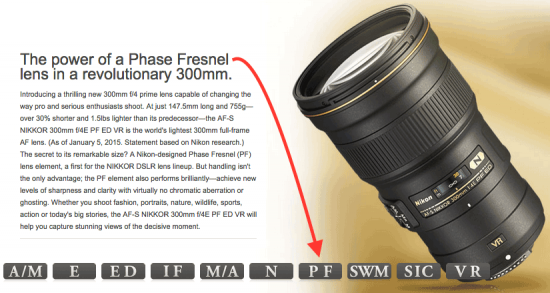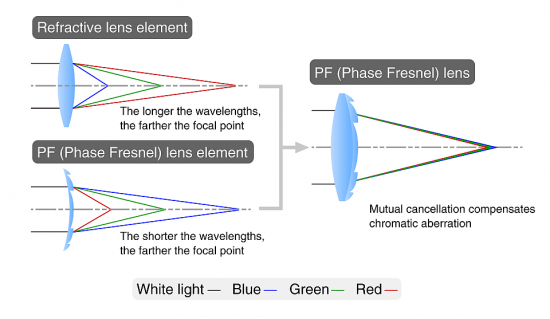The new 300mm f/4E PF ED VR (pre-order options) is the first Nikkor with Nikon’s Phase Fresnel (PF) lens – this is how they were able to get it so light (half the weight of the previous version) and small (as the rumors suggested). After last night’s announcement Nikon published a short article explaining the new lens technology:
The PF (Phase Fresnel) lens, developed by Nikon, effectively compensates chromatic aberration utilizing the photo diffraction phenomenon*. It provides superior chromatic aberration compensation performance when combined with a normal glass lens. Compared to many general camera lenses that employ an optical system using the photorefractive phenomenon, a remarkably compact and lightweight body can be attained with less number of lens elements.
A general interchangeable lens forms an image on an imaging plane, using the photorefractive phenomenon. The degree of light refraction differs depending on the color (wavelength), and image formation is performed in the order of blue (B), green (G), and red (R) starting with the portion near the lens (see the diagram below). The color deviation referred to as chromatic aberration induces color bleeding, resulting in a deterioration of observed or captured images.
With PF (Phase Fresnel) lenses, on the other hand, image formation is performed in the order of red (R), green (G), and blue (B) starting with the portion near the lens (see the diagram below). By combining the PF (Phase Fresnel) lens with a refractive lens, chromatic aberration can be effectively compensated.
* Diffraction phenomenon: Light has characteristics as a waveform. When a waveform faces an obstacle, it attempts to go around and behind it, and this characteristic is referred to as diffraction. Diffraction causes chromatic dispersion in the reverse order of refraction.
[Note]
Due to the characteristics of a PF (Phase Fresnel) lens that utilizes the photo diffraction phenomenon, when there is a strong light source within the frame or when light enters the lens from outside of the frame, ring-shaped colored flare may occur according to shooting conditions:

This phenomenon can be minimized with “PF Flare Control” included in Capture NX-D (see the comparison images above). Refer to the software manual for more information.
As I already reported yesterday, Nikon already used Phase Fresnel (PF) lens in some of their microscopes.
Phase Fresnel (PF) lens was used in the Nikon TC-E3PF 3x teleconverter for the Coolpix 8400 Camera.









